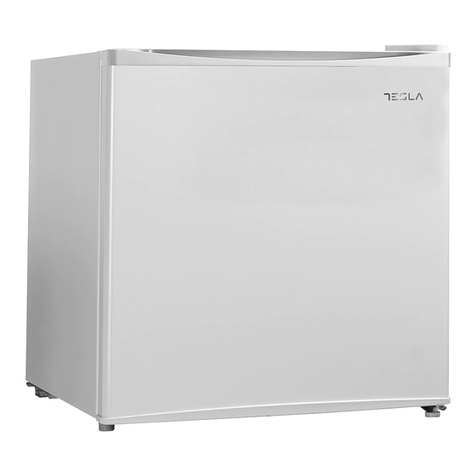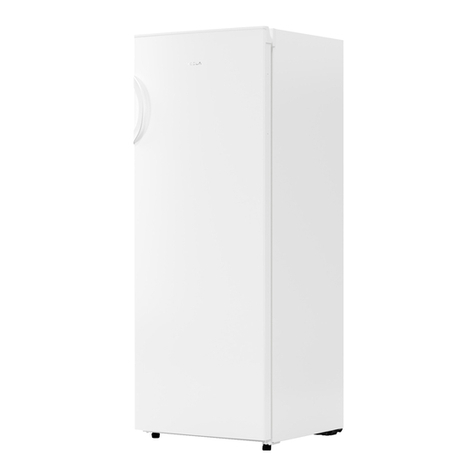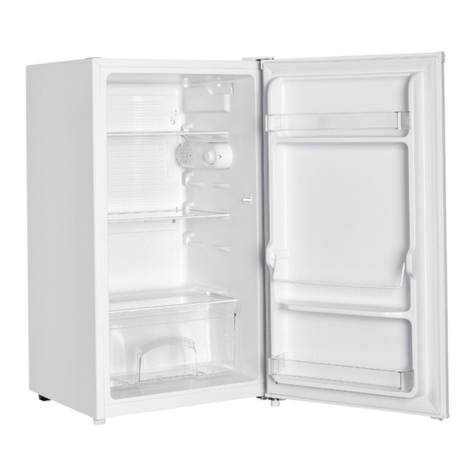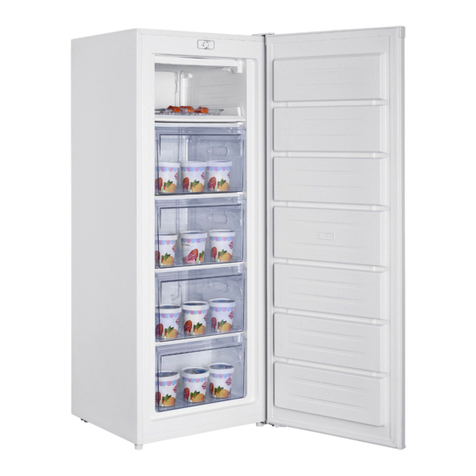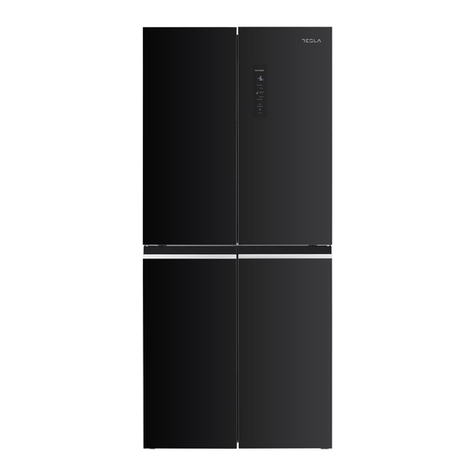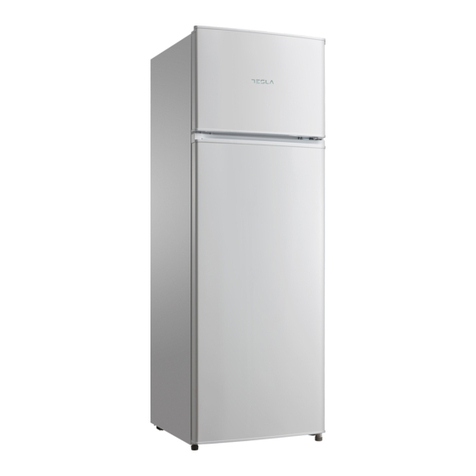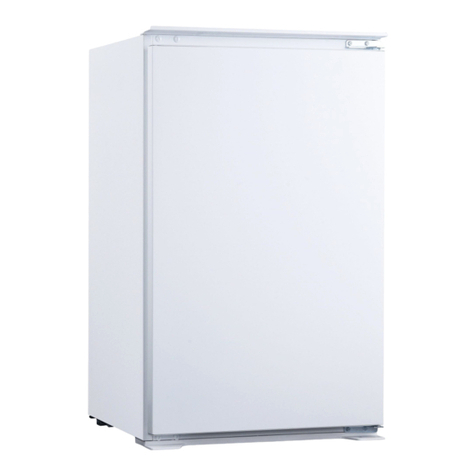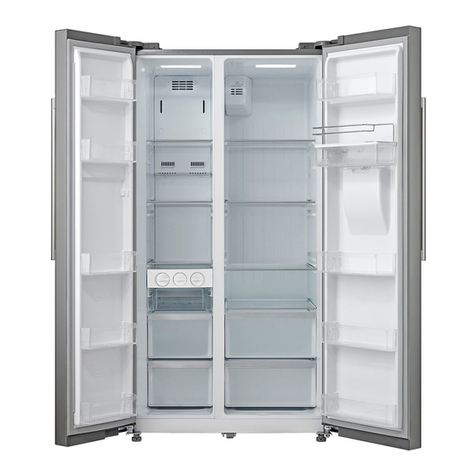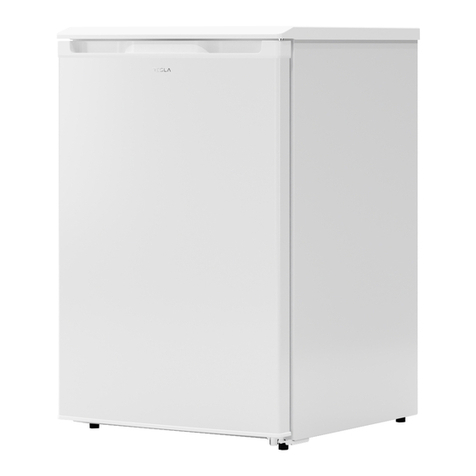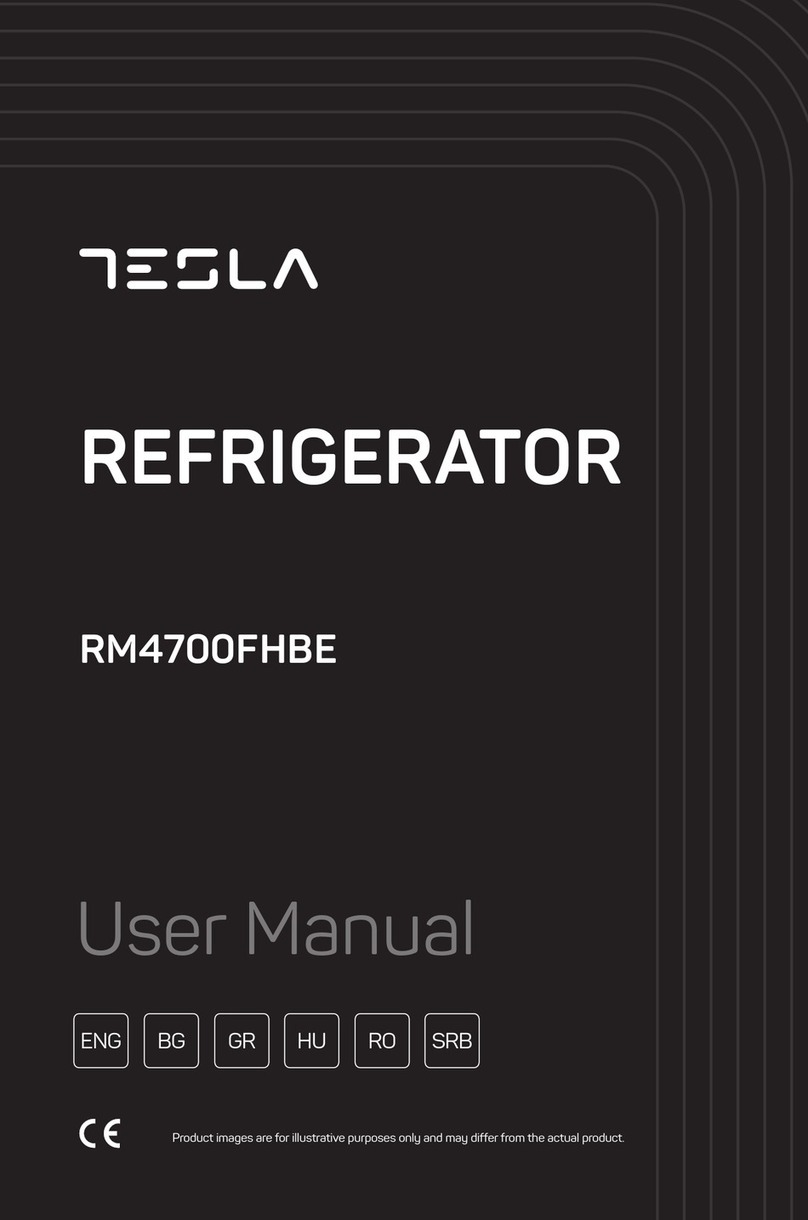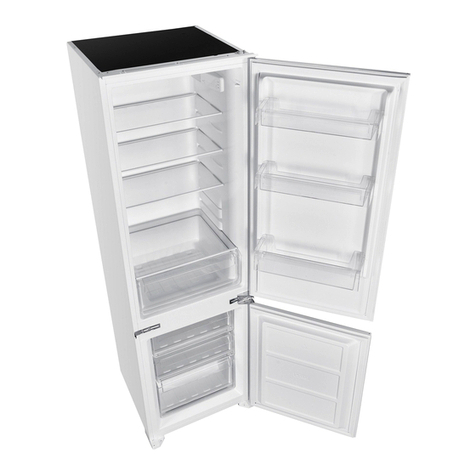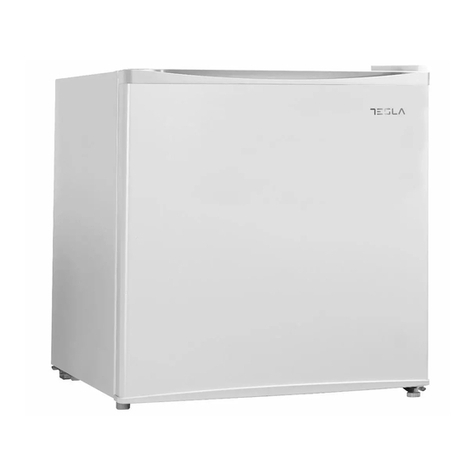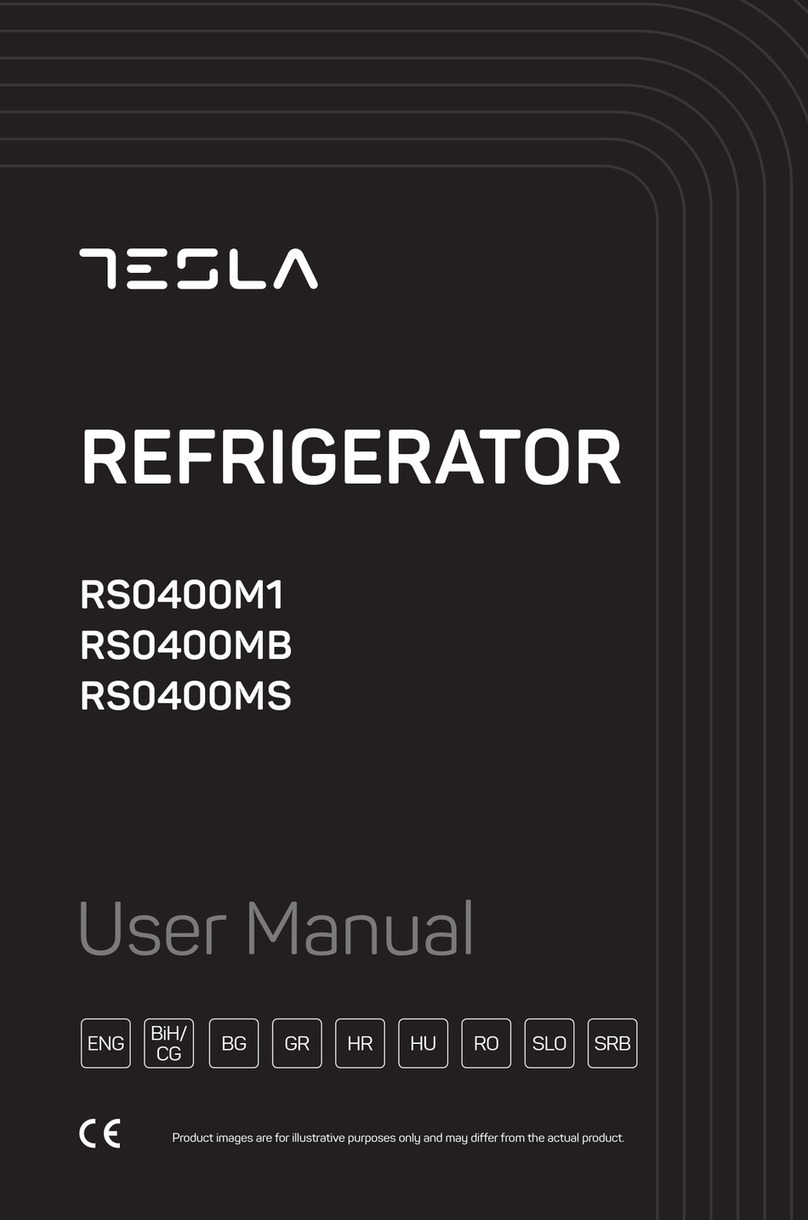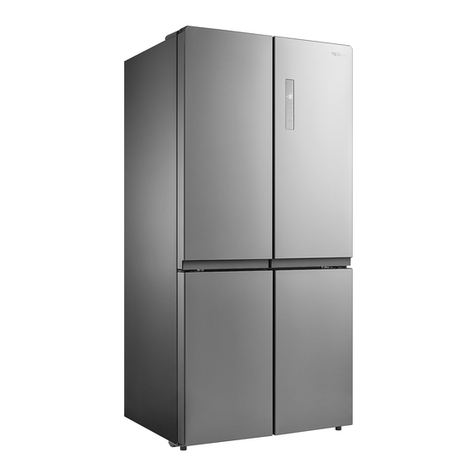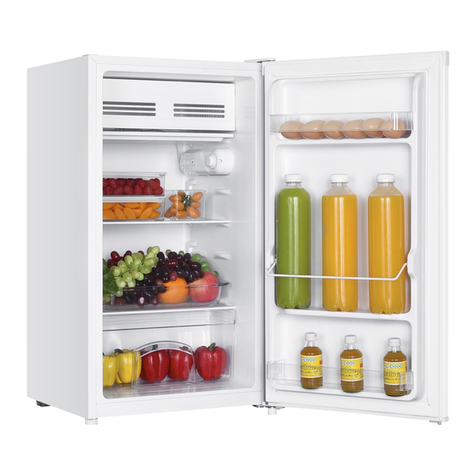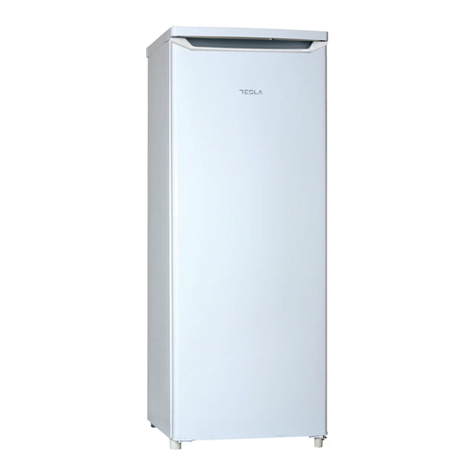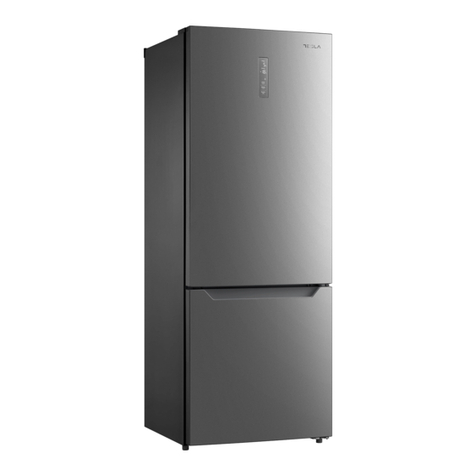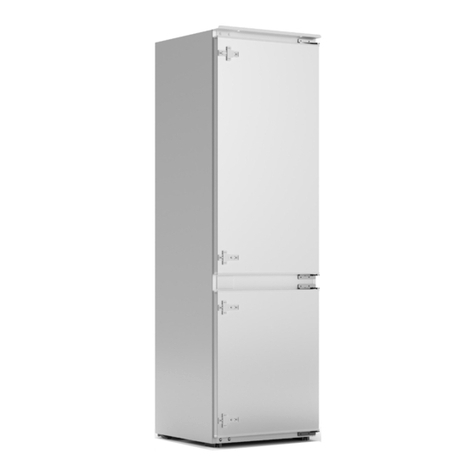
3
ENG
playing children from suffering electric shock or closing
themselves in.
• If this appliance features a magnetic door seal to
replace an older appliance having a spring lock (latch)
on the door or lid, be sure to make that spring lack
unusable before you discard the old appliance. This will
prevent it from becoming a death trap for a child.
General safety
Keep ventilation openings, in the appliance enclosure or
in the built-in structure, clear of obstruction.
Do not use mechanical devices or other means to
accelerate the defrosting process, other than those
recommended by the manufacturer.
Do not damage the refrigerant circuit.
Do not use other electrical appliances (such as ice cream
makers) inside of refrigerating appliances, unless they
are approved for this purpose by the manufacture.
Do not touch the light bulb if it has been on for a long
period of time because it could be very hot.1
When positioning the appliance, ensure the supply cord
is not trapped or damaged.
Do not locate multiple portable socket-outlets or
portable power suppliers at the rear of the appliance.
• Do not store explosive substances such as aerosol cans
with a flammable propellant in this appliance.
• The refrigerant isobutene (R600a) is contained within
the refrigerant circuit of the appliance, a natural gas
with a high level of environmental compatibility, which
is nevertheless flammable.
• During transportation and installation of the appliance,
be certain that none of the components of the
refrigerant circuit become damaged.
